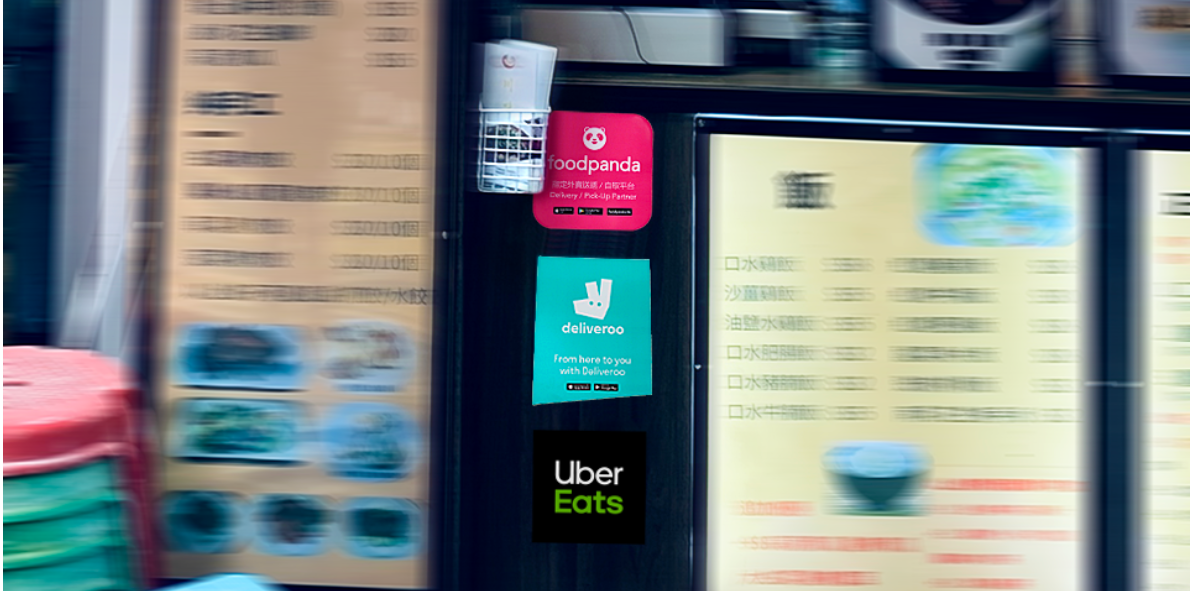The Association of American Railroads (AAR) today reported U.S. rail traffic for the week ending April 10, 2021. For this week, total U.S. weekly rail traffic was 513,724 carloads and intermodal units, up 24.5 percent compared with the same week last year. Total carloads for the week ending April 10 were 233,300 carloads, up 17.4 percent compared with the same week in 2020, while U.S. weekly intermodal volume was 280,424 containers and trailers, up 31.2 percent compared to 2020. For some rail traffic categories, percentage changes for the current week compared with the same week in 2020 are inflated because of the widespread shutdowns — and subsequent large reduction in rail volumes — that impacted many economic sectors last year at this time.
Uber and Lyft have, for a long time, been the market leaders in the growing rideshare industry, but their competitive dynamics have been anything but constant. In many ways, they can be thought of as a duopoly, fighting for dominance, but in other ways, they are competing simultaneously in many local submarkets. Uber’s overall market share, relative to Lyft, has been falling over the last ten years. By breaking down this market into the territories it serves, we’re able to see this share broken down further. It appears that Uber dominates smaller markets without much competition, but Lyft has a much larger relative footprint in larger cities.
Materials for the early new mRNA vaccines are becoming harder to get, and they are hard to manufacture and store. But there’s another vaccine on the horizon that could solve some of those problems, and keep vaccination efforts moving. A vaccine created by Maryland-based biotech company, Novavax, showed 89.3% efficacy in a Phase III UK trial with 15,000 participants. The company is anticipating receiving emergency-use authorization from the FDA in May, and is set to expand vaccine trials in Q2 to include children and teens, and to begin crossover trials that will ensure all participants, including U.S. study participants, receive an active vaccine candidate.
British over-50s have had a vaccine-induced spring in their step over the last few weeks, with the number of park visits amongst this demographic doubling since the start of the year. The acceleration in parks’ usage is significantly greatest for those in this demographic: rising at 51% more than those aged 30-40, and 85% more than those aged 20-30, having begun the year 17% below all other age groups.
The home improvement and home goods sectors have been among the strongest in retail throughout the pandemic. When COVID initially hit, home improvement leaders like Home Depot and Lowe’s benefitted from essential retail status allowing consumers to embark on DIY projects with their newfound time at home. Visits in Q1 2021 for the sector were up 22% year over year when compared to the same period in 2020. This was actually the largest visit increase over the last four quarters, something that can be attributed to both Q1 not being a normal peak period for the sector, and the comparison to 2020’s dip in March.
INRIX continues to monitor vehicle miles traveled (VMT), the amount people drive, as the country re-emerges from COVID-19. VMT across the United States has continued to surge since the beginning of March. Yet growth in VMT has not been evenly disbursed. Kentucky saw the largest growth in VMT vs four weeks ago with a 31% unadjusted growth in travel. Vermont has seen the lowest growth at 4%. Overall, travel in the Southern United States has seen large increases in VMT over the past 4 weeks as indicated in the map below.
Mass COVID-19 vaccination programs are underway across the globe and providing the tourism and hospitality industry a much-needed confidence boost following 12 months or so of seismic declines. However, with lockdowns still in place for some regions and the emergence of new virus variants, predicting future travel demand remains challenging. To track evolving consumer trends in the sector, and examine everchanging attitudes on travel, STR conducted a quantitative survey in February 2021 among 1,333 respondents from its Traveler Panel. According to our latest research, consumers did not lose their appetite to travel as most (66%) had planned, booked, or undertaken travel since the start of the year. Moreover, despite national and regional lockdowns, and widespread advice to avoid non-essential travel across the globe, underlying demand for travel remains strong as three quarters of travelers intend to undertake an overnight trip by the end of 2021.
More than almost any other sector, the restaurant industry suffered one of the hardest COVID-19 hits. Yet, location data provides a hopeful sign of recovery across dining segments, with some, like the QSR and coffee sub-sectors, expected to reach a full recovery faster than others. The change that the pandemic brought to the daily schedules of many impacted the various dining segments differently. Those relying more heavily on daily routines, like the coffee and breakfast space, were affected more. But despite the differences, there was one strong pandemic-related trend experienced by all segments – a significant rise in the overall proportion of mid-day visits. As flexible work became more common, mid-day lunch outings to a local cafe or restaurant – either as a short escape from the work-from-home monotony or as a refreshing place to work for a few hours – became a more valuable asset.
Weekly RevPAR rose to US$65.34, which was a 4.2% increase week over week and the industry’s highest level of the past 56 weeks when indexed to 2019. RevPAR has increased week over week all but three times this year. STR’s Market Recovery Monitor reflected the country’s stronger overall RevPAR performance with 73 markets either in Recovery or Peak categories. More encouraging, only 20 markets were in the Depression category, the least of the past 53 weeks. Top 25 Markets are also improving, and as a group, entered the Recession phase for the first time.
Unsurprisingly, malls were hit especially hard by COVID with visits declining dramatically in the spring before beginning a slow comeback to normalcy in May and June. Yet, there are real reasons to believe that the sector could see a strong revival in 2021. Looking at an index of over 50 top tier malls throughout the country shows the steady pace of return that the sector saw throughout the summer. Following a dip in November as COVID cases surged a week before Black Friday’s shopping peak, the sector recovered with year-over-year gaps shrinking each month from November through January.
Almost exactly one year after the start of the pandemic, the third and largest-to-date stimulus payment of $1400 per individual (vs. the second round’s $600 and the first round’s $1200) began rolling out to taxpayers in mid-March. In addition to its increased size, the timing of this payout is particularly interesting, coinciding with rising vaccination rates and the re-opening of many local economies, thus providing more ‘purchasing power’ this round. We dove into the data to see how this third stimulus round impacted consumer spending across various geographies, sectors, and retailers.
The Dodge Momentum Index moved 1.7% higher in March to 151.4 (2000=100) from the revised February reading of 148.8. The Momentum Index, issued by Dodge Data & Analytics, is a monthly measure of the first (or initial) report for nonresidential building projects in planning, which have been shown to lead construction spending for nonresidential buildings by a full year. According to the March data, the Index hit its highest level since the summer of 2018 as a result of an increase in institutional projects that entered the planning stage, and which came on the heels of a similar gain for the sector in February.
The Association of American Railroads (AAR) today reported U.S. rail traffic for the week ending April 3, 2021, as well as volumes for March 2021. U.S. railroads originated 1,156,158 carloads in March 2021, up 4.1 percent, or 45,504 carloads, from March 2020. U.S. railroads also originated 1,430,331 containers and trailers in March 2021, up 24 percent, or 276,781 units, from the same month last year. Combined U.S. carload and intermodal originations in March 2021 were 2,586,489, up 14.2 percent, or 322,285 carloads and intermodal units from March 2020.
With 2020 behind us and signs of recovery abound, we checked back in on the travel industry to see how it’s been rebounding thus far and what 2021 could have in store for hotels and airports. Last time we checked in, visits to airports were rebounding at the end of the year following the holidays, and that progress continued into 2021. Almost every airport showed year-over-year growth from the end of 2020 into the new year. Only DFW airport in Dallas showed an increase in the year-over-year gap between January and February – likely because of the unprecedented weather the state experienced at the beginning of the new year.
Today we’re going to look at our Second Reemergence. Foot traffic has dramatically increased over the last few weeks as quarantine fatigue, vaccinations, declining case counts, weather, and more encouraged us to leave our homes en masse. We’re not back to normal. Like our first reemergence last Spring, traffic is distributed differently and highly regional. But even still: we haven’t seen activity like this in quite some time.
Despite many accounts of an urban exodus, the COVID-19 pandemic will not leave American cities hollow. Throughout the pandemic search activity has turned towards large, dense cities, not away from them. For every renter who left, there appear to be many ready to take their spot. Compared to this time last year (i.e., pre-pandemic), the data show more search activity directed towards higher-density cities and towards the principal cities that anchor each major metropolitan area. Simultaneously, increased demand for short-term leases indicate that pandemic-era moves are less permanent than those of previous years.
Brick-and-mortar retailers have been suffering during COVID-19, but one category that is expanding is dollar stores. Demand for the inexpensive groceries and household items found in dollar stores skyrocketed in 2020, especially in rural areas with fewer shopping options. An analysis of transaction data found that among dollar stores, Dollar General experienced the highest sales growth in 2020 by capturing spend from customers who previously shopped at competitors.
In this Placer Bytes, we break down the latest performances of two home furnishings leaders – Bed Bath & Beyond, and Conn’s, and analyze Amazon’s latest grocery push. There were fairly widespread concerns just a few years ago that Bed Bath & Beyond’s long-term prospects were anything but rosy. But, the brand saw a strong year that was only expected by a handful of observers. And it looks like that strength could continue into 2021. After seeing visits decline steadily week over week following a peak in mid-December, visits began to steadily rise again after a wave of inclement weather that hit across the US in late January and early February. By the week beginning March 15th, visits had risen 15.1% week over week.
Meetings and conferences generate big business for hotels. The pandemic made a big mess of that. On the rebound, hoteliers are eager to see that demand segment return. The arrival of COVID-19 vaccines—coupled with a societal eagerness to get out of the house—has led to a relatively robust bounce in leisure travel, which helped underpin a listless hospitality business. Add Zoom fatigue of workers to the list of travel motivators and the return of medium-sized and large-scale gatherings aren’t too far behind. That’s good news for hotels, as properties suffered massive losses due to the near evaporation of group business last year. Pre-pandemic, when hotels were riding high, total conference and banquet RevPAR (excluding rooms) for 2019 in North America was $40.15. That revenue source fell to $9.28 in 2020.
Grocery was one of the stronger performers throughout the pandemic, and there is real reason to believe that sector could be heading into an extended period of strength. However, the coming year is going to be defined by a high degree of complexity when attempting to measure the performance of top grocery brands. Year-over-year analyses are an especially useful tool to account for seasonality and understand brand strength over time. As a simple example, you’re more likely to visit an ice cream store when it’s hot so looking at said parlor in June year over year will tell far more than looking at the same June month compared to the January or March that preceded it. But 2021 is going to be mired in the unique challenge of trying to make sense of certain sectors in a world where year-over-year data could be heavily misleading.































































